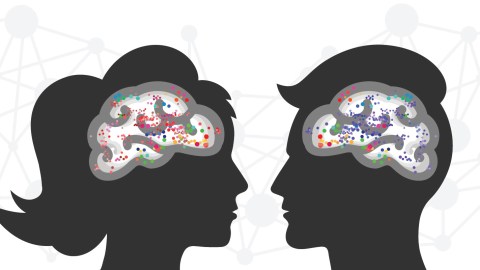New study proves absence really does make the heart grow fonder

Image by magic pictures on Shutterstock
- New research, led by behavioral neuroscience assistant professor Zoe Donaldson explores what drives our mammalian instinct to create lasting bonds – and what exactly happens when we are apart from people we share those bonds with.
- Studying prairie voles (who fall under the 3-5% of mammals who, along with humans, are monogamous), Donaldson and her team discovered a unique set of cluster cells that light up when reunited with a mate after a period of separation.
- This study is just the tip of new developing research that could lead to groundbreaking new therapies for individuals who struggle with these types of connections, including people with autism, people who struggle with mood disorders, etc.
Assistant professor of behavioral neuroscience at CU Boulder Zoe Donaldson has recently led a year-long study of prairie voles, who are in the 3-5% of mammals (along with humans) who tend to mate for life.
“In order to maintain relationships over time, there has to be some motivation to be with that person when you are away from them. Ours is the first paper to pinpoint the potential neural basis for that motivation to reunite,” explains Donaldson.
What drives the mammalian instinct to create lasting bonds? This was the question Donaldson and her team sought out an answer for. And not an answer based on philosophy or emotion, but an answer based on neuroscience and hard-proof.

This research ground lead to new therapies for individuals who struggle with this kind of emotional connection. Photo by torook on Shutterstock
Donaldson and her team used tiny cameras and a new technology called in-vivo-calcium imaging to analyze the brains of prairie voles at three separate times:
- During their first encounter with another vole
- Three days after mating with another vole
- 20 days after living in the same area as the mate
When the voles were together in the same area, their brains looked and reacted the same way. However, after separating the voles, it was discovered that a unique cluster of cells in the nucleus accumbens fired up when they were reunited.
In fact, the study proved that the longer the voles had been paired before being separated, the closer their bond became and the glowing cluster that lit up became stronger during their reunion.
It’s interesting to note that a whole different cluster of cells lit up upon them being introduced to a stranger vole, suggesting that these specific cells may actually be there for the purpose of forming and maintaining bonds with others.
This study confirms that monogamous mammals (voles and humans alike) are very uniquely hard-wired to mate with others. We have a unique biological drive that urges us to reunite with people we care for, and this drive can be one of the reasons we fall under the 3-5% of mammals that seek out monogamy.
What does this mean for the future of human behavior studies?
As far as research goes, this is quite groundbreaking – as this could potentially give us insight into various kinds of therapies for individuals who are autistic or individuals who struggle with severe depression and/or other disorders that make these kinds of emotional connections difficult.
There is still much to learn about these specific series of events that happens when we’re reunited with a mate after a period of separation. For example, it’s unclear if this “neuronal code”, so to speak, is associated with emotion in humans the same way it is associated with desire in voles.
According to Donaldson, the research in this department is only just beginning, and the definitive outcome of this study is that mammals are quite literally hardwired to be monogamous mammals.
Are humans hardwired for monogamy? | Helen Fisher | Big Thinkwww.youtube.com
This isn’t the first time a study like this has been conducted, even though this particular study has unveiled new neuronal clusters that had not been previously accounted for.
There have been many other studies of mammals (from small rodents all the way up to human beings) that suggest we are not only hardwired to seek out intimate connections through monogamy, but that we are also extremely and profoundly shaped by (and perhaps even dependent upon) the experiences we have with those mates.
Brene Brown, a University of Houston Graduate College of Social Work (who specializes in social connection), explains:
“A deep sense of love and belonging is an irresistible need of all people. We are biologically, cognitively, physically, and spiritually wired to love, to be loved, and to belong. When those needs aren’t met, we don’t function as we were meant to.”
This idea is backed up by countless studies, including Dr. Helen Fischer’s revolutionary study back in 2005, which included the very first fMRI images of “the brain in love”.
This study concluded that the human brain doesn’t just work to amplify positive emotions when we experience romantic love, but that the neural pathways responsible for negative emotions (such as fear and anxiety) are actually deactivated.





